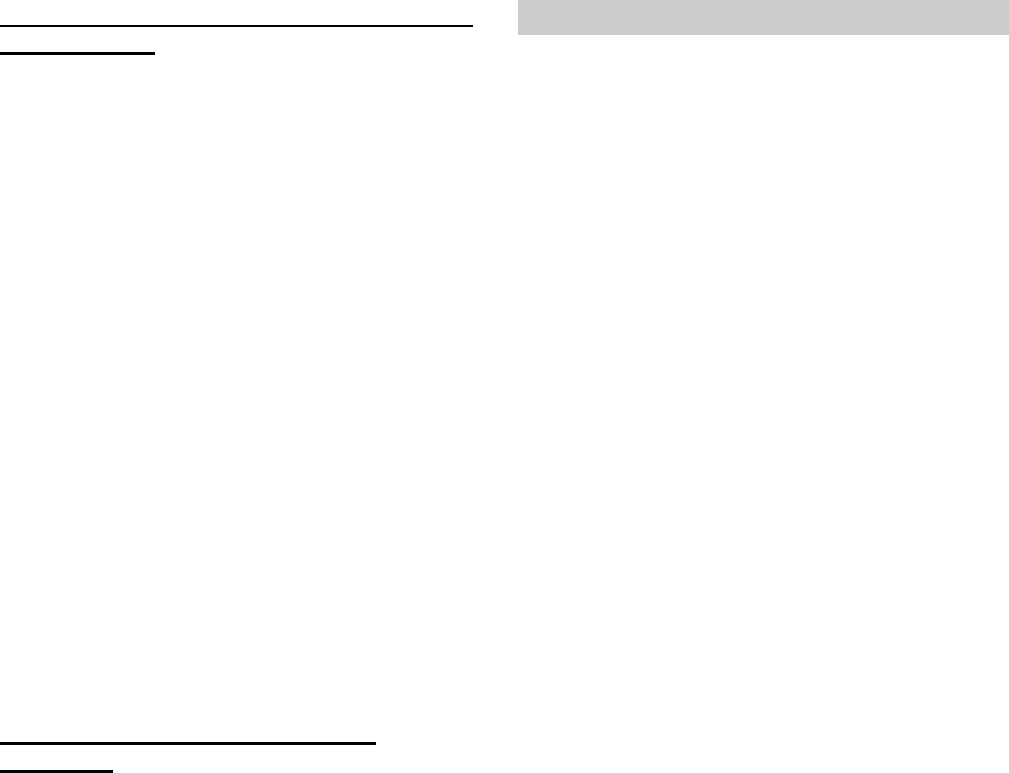
MAXON
SP-300 HAND HELD
Page -19-
May 2001
REMOVING & REPLACING THE DAUGH-
TER BOARDS
The Daughter Boards are soldered into the Main Board
Assy.
1. Remove the Main Board (Refer to Removing &
Replacing the Main Board).
2. Unsolder the appropriate Daughter Board from the
Main Board Assembly.
To Replace a Daughter Board:
1. Ensure that the Main Board Assembly and Daugh-
ter Board are mechanically clean.
2. Insert the daughter board in the required position.
3. Ensure the Daughter Board is properly seated in the
Main Board Assembly.
4. Solder the Daughter Board into position.
z
CAUTION: To avoid damage to the Main Board
Assembly, soldering must be accomplished
quickly. Refer to Component Replacement section
of manual located on this page.
REMOVING & REPLACING THE
SPEAKER
To remove the speaker:
1. Remove the Main Board (Refer to Removing &
Replacing the Main Board).
2. Unscrew the two speaker mounting bracket screws
from the chassis.
3. Desolder the two pin wire harness from the speaker.
4. Remove the speaker.
To replace the speaker
1. Reverse the steps taken to remove the speaker.
COMPONENT REPLACEMENT
Surface Mount Components
Surface mount components should always be replaced using
a temperature controlled soldering system. The soldering
tools may be either a temperature controlled soldering iron
or a temperature controlled hot-air soldering station. A hot-
air system is recommended for the removal of components
on these boards. With either soldering system, a temperature
of 700° F (371° C) should be maintained.
The following procedures outline the removal and replace-
ment of surface mount components. If a hot-air soldering
system is employed, see the manufacturer’s operating
instructions for detailed information on the use of your sys-
tem.
z
CAUTION: Avoid applying heat to the body of any
surface mount component using standard soldering
methods. Heat should be applied only to the metal-
ized terminals of the components. Hot-air systems
do not damage the components since the heat is
quickly and evenly distributed to the external sur-
face of the component.
z
CAUTION: The CMOS Integrated Circuit devices
used in this equipment can be destroyed by static
discharges. Before handling one of these devices,
service technicians should discharge themselves by
touching the case of a bench test instrument that has
a 3-prong power cord connected to an outlet with a
known good earth ground. When soldering or des-
oldering a CMOS device, the soldering equipment
should have a known good earth ground.
Surface Mount Removal
1. Grip the component with tweezers or small needle
nose pliers.
2. Alternately heat the metalized terminal ends of the
surface mount component with the soldering iron.
If a hot-air system is used, direct the heat to the ter-
minals of the component. Use extreme care with the
soldering equipment to prevent damage to the
printed circuit board (PCB) and the surrounding
components.
3. When the solder on all terminals is liquefied, gently
remove the component. Excessive force may cause
the PCB pads to separate from the board if all sol-
der is not completely liquefied.


















